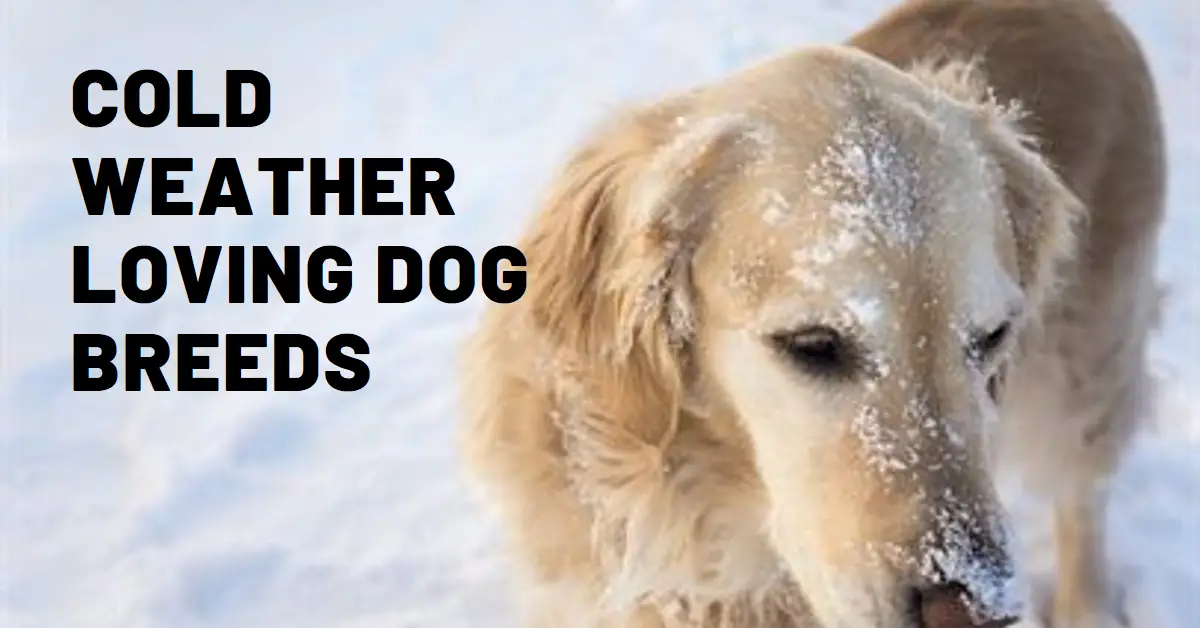Some like it hot. Some like it not. But these 7 pooches fall into that category of dogs that prefer when there’s snow outside instead of scorching heat. This preference has a lot to do with their land of origin. However, sometimes, it’s simply because they have a thicker coat that thrives better in the winter.
Imagine a Siberian Husky living in Mexico! Or, an Alaskan Malamute in Florida, without a sweater, a coat, or dog boots! It’s possible, but it’s not their ideal living condition.
Instead, you might want to keep Huskies, Malamutes, Samoyeds, and the rest of the cold-loving gang somewhere where there’s nice, crisp, cold air. Just make sure you provide enough warmth and keep your dogs hydrated at all costs.
1. Of Course, The Siberian Husky Dog Breed
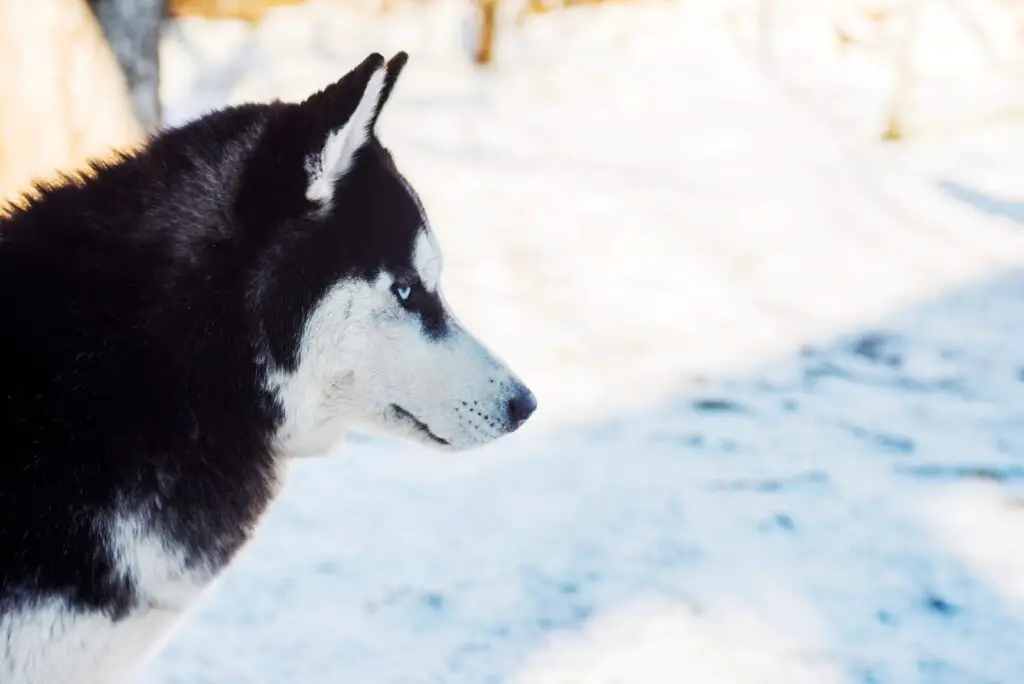
Coming straight from the icy lands of Siberia is our Siberian Husky buddy. The medium-sized working dog breed is known for thriving in freezing temperatures. Their double coat, which keeps them insulated, allows them to happily play in the snow for hours.
Siberian Huskies, with their dense undercoat and slick guard coat, don’t mind the cold one bit. In fact, their coat works so well in frigid temperatures that they can overheat in warmer climates. No wonder this breed dominates sled dog racing – they’re built for endurance in the cold.
The key when owning a Husky in a cold climate is providing enough shelter so they can get out of the elements when needed. But otherwise, this snow-loving breed will want to spend most of their time romping around in their preferred chilly habitat.
2. Not So Surprisingly, The Alaskan Malamute
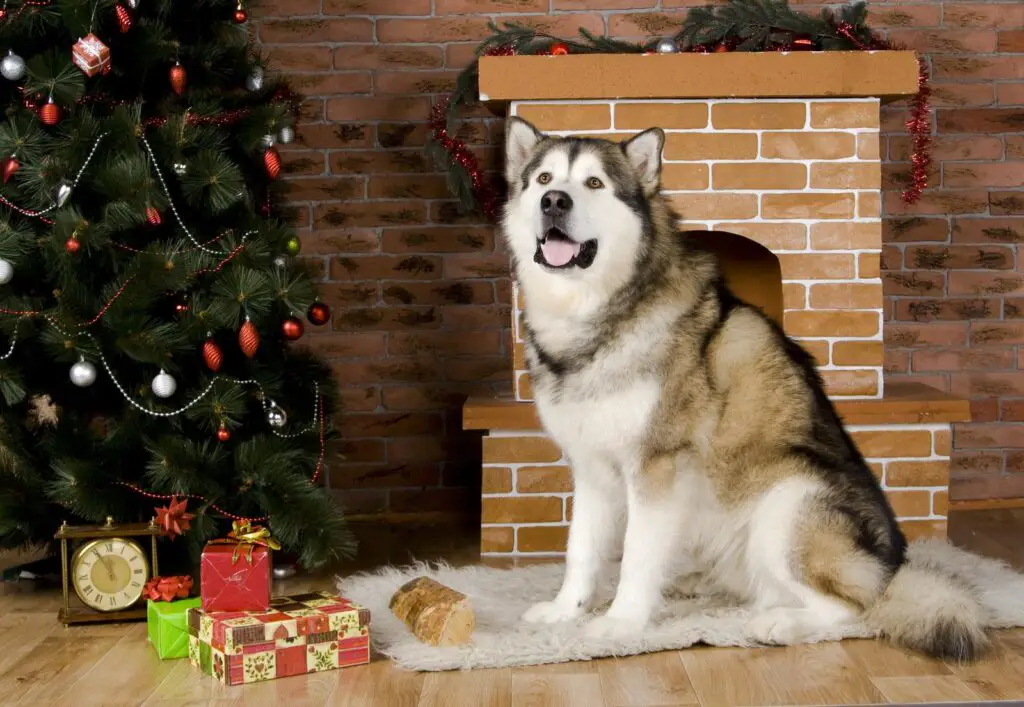
Hailing from Alaska, USA is the Alaskan Malamute. This Arctic breed, like the Siberian Husky, is a true cold weather canine. Centuries of breeding have made the Malamute a natural winter companion.
The Mal’s dense, wooly double coat serves as effective insulation against harsh winds and freezing temps. And their compact build and large paws give them stability and traction on snow and ice.
While most dogs would shiver or head inside on a below zero day, the Alaskan Malamute will be prancing around, ready to play. This breed thrives when pulling sleds or backpacking in snowy mountains.
Just like their Husky cousins, too much heat can cause Malamutes distress. So if you have a Mal, be prepared for them to want to live their best cold weather life!
3. Samoyed, The Dog With a Permanent Smile
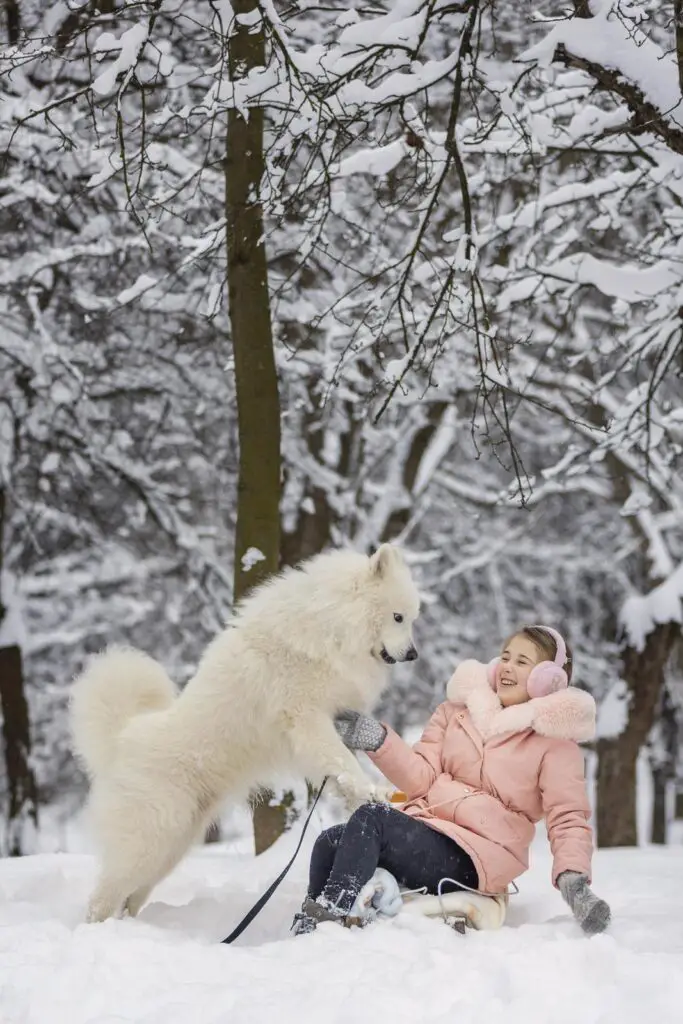
Take one look at a Samoyed dog and you’ll probably notice two things right away – their all-white fluffy coat and big happy smile! This breed, originally from the freezing Siberia region, definitely loves cold climates.
The Samoyed double layer coat, consisting of a soft, thick undercoat and harsh protective topcoat, allows this breed to thrive in subzero temperatures. They can even sleep outside in the snow! No doghouse required for this cold weather canine.
And the Samoyed’s upward curled mouth gives them a perpetual grin – almost like they enjoy the winter chill. You can’t help but smile back at these playful polar pups!
One thing to note is overheating is a real concern for this breed. So make sure to monitor your Samoyed closely in warmer temperatures. Their coat is truly built for winter fun!
4. Canadian Eskimo Dog, The Ultimate Winter Warrior
If any breed deserves the title “king of cold weather dogs” it would be the legendary Canadian Eskimo Dog. After all, they played a pivotal part in saving the lives of indigenous people when settling the harsh Canadian Arctic.
This powerful spitz breed helped the Eskimo people pull heavy sleds, hunt, and even keep children warm at night! Their thick double coat and compact build allowed them to conquer the harshest winter conditions on earth.
While this breed is exceedingly rare today, their winter hardiness is unmatched. Canadian Eskimo Dogs thrive in temperatures reaching -75°F (-60°C)! Talk about a dog built for the deep freeze!
5. Finnish Lapphund, Born to Live North
Originating from the northern reaches of Finland is a fantastic cold climate breed called the Finnish Lapphund. Used by the semi-nomadic Laplander people as reindeer herders, this breed is no stranger to snow.
The Lapphund boasts a seasonal double coat, meaning they grow a dense insulating undercoat as winter approaches. Their harsh topcoat sheds rain and snow with ease.
This loyal working breed has a strong prey drive, originally used to keep predators away from reindeer. But nowadays, they’re happy to live as active family companions.
Just make sure to give them daily mental and physical stimulation. This northern breed needs a job to do – even if that job is playing fetch in the snow!
6. Tibetan Mastiff, The Furry Guardian
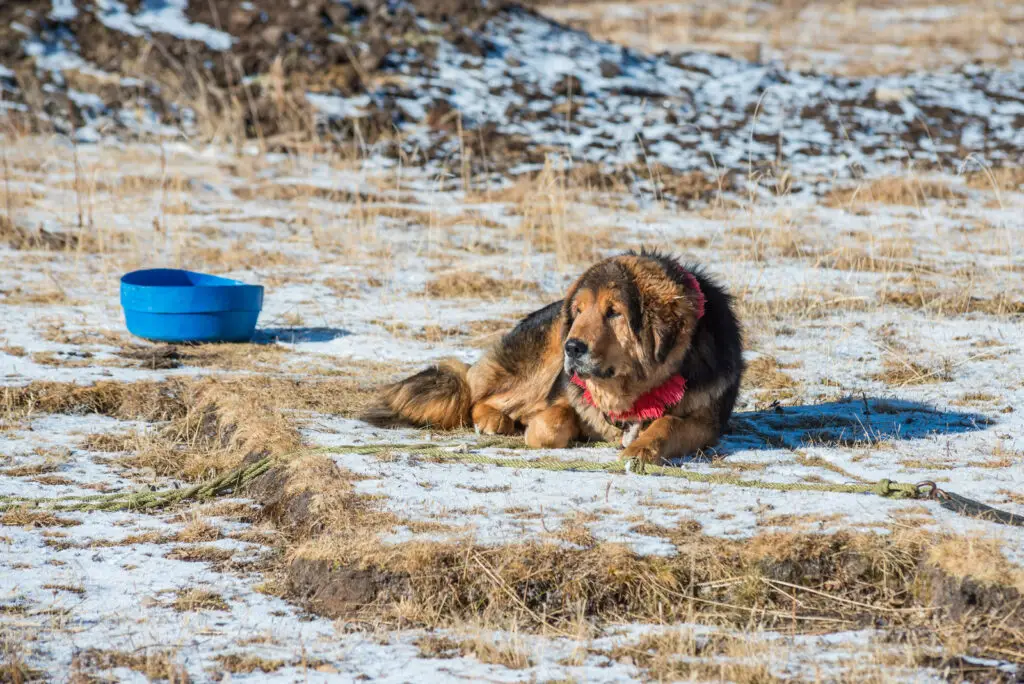
On the other side of the world, high up in the Himalayan mountains, lives the impressive Tibetan Mastiff. This heavy coated giant breed stands ready to take on frigid temps and icy winds.
The Tibetan Mastiff has a long, dense double coat with a wooly underlayer for insulation. Their topcoat is course and weather resistant. This allows them to sleep outside while guarding flocks from predators.
Despite their size, Tibetan Mastiffs are quite agile and surefooted thanks to generations trekking mountain passes. Snowy hiking trails are no match for their sturdy built.
While Tibetan Mastiffs prefer cooler climates overall, their coat allows them to briefly handle warmer weather too. But you’ll no doubt find them most comfortable when the temperature drops!
7. Akita, Symbol of Good Health and Longevity
Last but certainly not least is a dog held in high esteem in its northern Japanese homeland – enter the Akita. Known as a symbol of good health, happiness, and longevity, this breed was born to handle harsh snowy winters.
The Akita double coat is incredibly effective at insulating this large, sturdy breed from cold and wet conditions. Their unique coat even reflects sunlight in warmer weather.
Originally used for hunting dangerous game like wild boar, Akita dogs are tremendously athletic and nimble on their feet, even on snow and ice. Nowadays they thrive as loyal family protectors and companions.
If you’re looking for a steadfast, courageous dog that loves the winter almost as much as their people, the Akita fits the bill! Just be prepared for lots of seasonal shedding with this breed. It’s well worth having an Akita by your side during long winter months!

